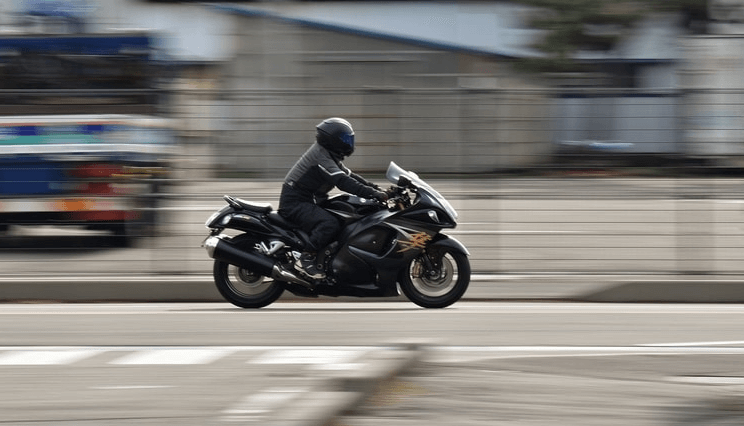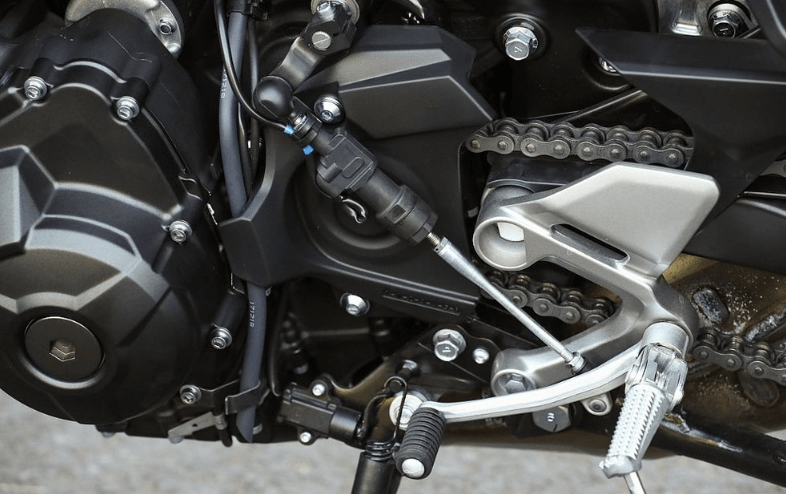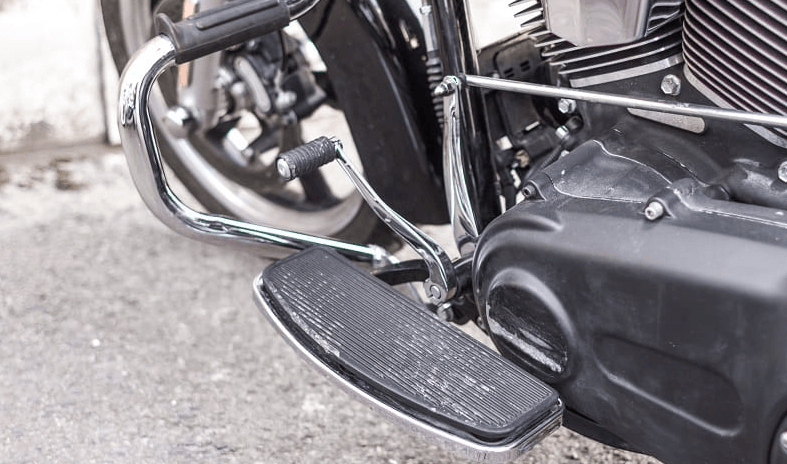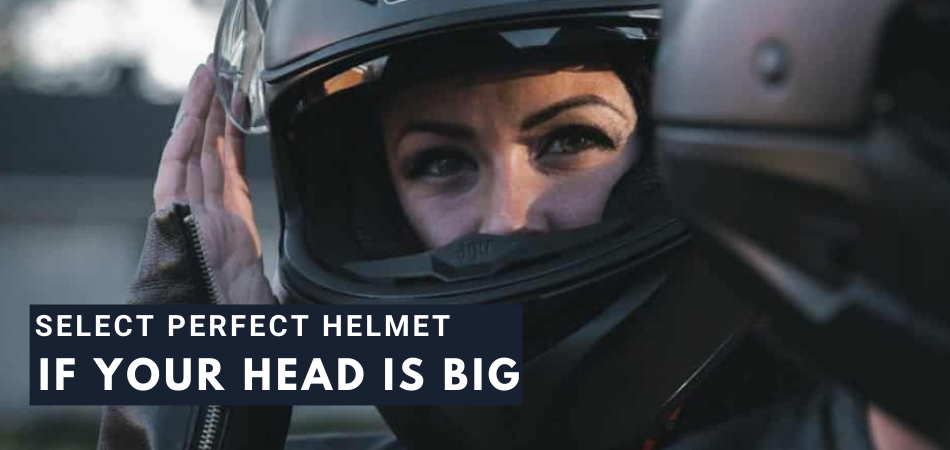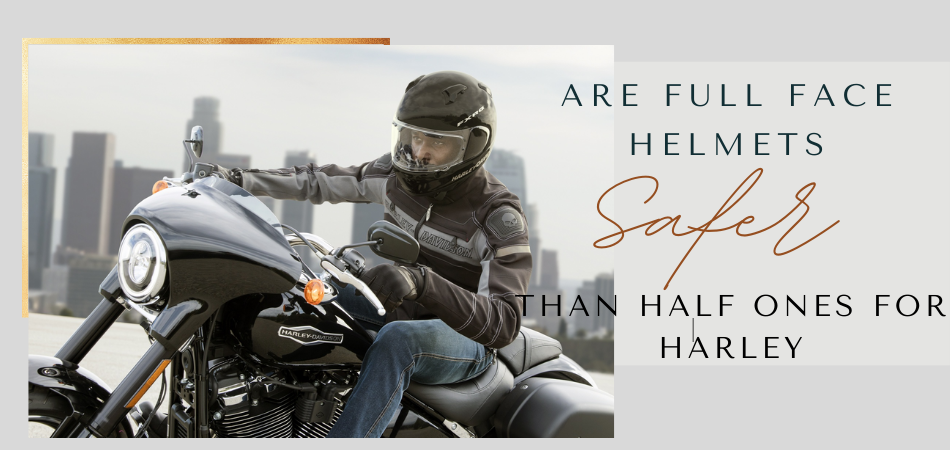When riding a motorcycle at a long distance, one of the challenges will be changing gears. This can be pretty confusing if not properly done and might end up causing problems for your engine. Nobody wants to experience that all. So, now, you must know when to shift Gears on a Motorcycle at What Rpm?
Although changing gears on a motorcycle should be instinctive and varies based on the situation, there are some standard speeds to changing gear. These include 1st Gear (0-15k/hr.), 2nd gear (15-30km/hr.), 3rd gear (30-40km/hr.), 4th gear (40-55km/hr.), 5th gear (55km/hr. and more) for higher gears, 5th and 6th gear.
This article has the details of important pointers about gear shifting on your motorcycle. It also discusses the required rpm. Moreover, we’ve outlined the consequences of shifting gears on your motorcycle below.
Key Takeaways:
- The general way to switch up the gear on your motorcycle is just as it’s entering the red mark on your tachometer. A tachometer is a tool for measuring the change within your engine.
- The right RPM to shift gears is based on the bike type and road conditions. Another factor that determines the right RPM for a gear switch is the bike’s capacity. However, most riders would prefer shifting gears at about 5000 to 7000 RPM.
- Some prominent advantages of shifting gears at the right RPM include seamless commuting, prolonged engine lifespan, and fuel economy management.
- To get the most speed on a gear change, the most suitable revolution per minute is about 2500 to 3500 RPM. This level is also based on using the right gear when making the change. Generally, the ideal gear for this shift is the fifth gear.
- The most notable problems of a motorcycle when a rider shifts gears too early are lugging engine and inadequate power supply. Additionally, there’ll be a case of improper fuel consumption. This occurrence usually leads to a stall.
- The majority of motorcycles don’t start in gear. However, this can change if the rider disengages the clutch. This measure is one safe thing to do against sudden jerking movement or jerking from the motorcycle if the ignition comes on.
What Should Rpm Be Before Shifting Gear?
Changing gears on your motorcycle varies based on the bike’s engine capacity. This is mainly because there are different motorcycle makes, and this impedes us from making a general conclusion on it. However, the general way to switch up the gear on your motorcycle is just as it’s entering the red mark on your tachometer. A tachometer is a tool for measuring the change within your engine.
We also recommend that, as a rookie, it’s important to change gear at about 30 to 50% of your overall engine RPM. Going higher than that won’t be safe for you if you’re not used to it. Interestingly, several professional riders still maintain this speed range. For example, your Suzuki might have a maximum rev of 6,000-7,000 RPM (revolutions per minute). When cruising, you can upshift between 3,000-3,500 RPM.
On the contrary, another person may have another biker and may have a sports bike that revs at circa 12,000-15,000 RPM. Changing gear in this bike will be between 6,000 to 7,500 RPM. But note that the bike type might vary these figures. Also, the engine capacity isn’t the only determiner of what RPM is ideal for changing gear. Other things affect the required RPM to change gear, such as the wheel or sprocket size, transmission design, and the terrain you’re riding on.
When riding on hilly terrain, we don’t recommend you to upshift but rather downshift if it’s a steep hill. On the contrary, if you ride uphill at a low RPM, this can cause a condition called “lugging the engine.” This situation can even damage your motorcycle engine. So, when upshifting or downshifting, you should ride at a healthy RPM.
When To Shift Gears On A Motorcycle At What Rpm?
The right RPM for shifting gears on a motorcycle is a function of the motorcycle type and the gear. This means that each bike has its right RPM for changing gears. Also, different gears vary the RPMs of a motorcycle. A higher gear requires a lower RMP to shift the gears.
While that is valid for motorcycle RPMs, you can also tell when it’s right to shift gears by paying attention to the sound of the revving engine. The higher your acceleration, the higher the pitch of the engine. Once you can hear a high pitching sound, it indicates a good time to change gears. So, let’s discuss the different gears available, their possible speed, and RPMs.
First Gear
The best speed array starts at 0 kilometers per hour for the first gear to 15 kilometers per hour. This does not indicate the driving speed, given that there’s a 0 figure there. It relates to the change in speed from when the motorcycle is at rest.
The first gear is such that it can be quite helpful for going up steep hills. Aside from this, it’s a seldom practice for motorcycle riders to use the first gear for a ride. Moreover, as a motorcycle rider, you don’t get that free ride with the first gear. The ride gets smoother from the next gear (2nd gear), and that’s where you can explore your riding objectives.
What distinguishes the first gear from the rest gears is its positioning. The first gear of virtually all motorcycles has a down gear positioning. While that’s true for the first gear, the remaining gears use a gear-up positioning. This is similar to the natural gear placed in between gears 1 and 2 of these bikes.
The RPM of the initial gear of a motorcycle ranges from 6000 to 8000 RPMs. These figures are particular to virtually every motorcycle. However, some bikes may come with different specifications.
Second Gear
You can’t say you’ve started your riding until you move to the next gear, which is the second gear. Here, the suitable speed for shifting gears is about 15 kilometers per hour to 30 kilometers per hour.
This is the most suitable gear for traveling inactively or when on a busy road. At this point, the RPM rate is also affected, as acceleration remains at a low rate. Additionally, employing this gear is ideal in traffic jams. What’s more, on the second gear, it’s uncommon to get that scratchy sound that comes up on the first.
Furthermore, it’s okay to switch from the second gear to the third gear when the RPM is between 5000 and 7000 RPMs. Again, certain motorcycle specifications may support different RPM figures. However, this is an ideal range for several bikes out there.
Third Gear
When on the third gear, your ideal speed variety begins at 30 kilometers per hour. This value continues to a perfect maximum of 40 kilometers per hour. Anything above this figure simply projects everything aside from perfect. This is because some riders might eventually go beyond this speed in the course of riding.
Although the RPM varies across different motorcycle models, a range of 4000 to 7000 RPM works fine on this gear.
Fourth Gear
On the fourth gear, your best speed array goes from 40 kilometers per hour to about 50 kilometers per hour. Moreover, it’s still okay to switch from the fourth gear to the fifth at a speed of 50 kilometers per hour. However, on this gear, the speed at 40 to 55 km per hour provides the ideal gear proportion for the shift.
Furthermore, the fourth gear of your motorcycle is where your access to high speed begins. We can’t say that 40 km/h is a high speed. However, it’s possible to incur injuries if a rider gets involved in an accident at this speed.
Also, when riding on this gear, it’s ideal for switching to the fifth when the RPM is about 3000 to 5000 RPM.
Fifth & Sixth Gears
On the fifth and the sixth gears, the speed you can attain is nothing short of 55 kilometers per hour. It’s okay to shift gears from the fourth gear to the fifth at a speed of 50 or 55 km/h. Also, it’s okay to shift to the sixth at any point on the fifth gear.
As you may already be aware, your speed on the fifth gear is most likely high. You want to make sure the road is free and smooth enough to go up to such speed. Likewise, you should ensure that the traffic on the road is minute. Moreover, taking a ride on these gears opens the rider to incurring injuries in case of a sudden crash or mishap. Therefore, there’s a need to ride carefully, and feel free to go down the gears if needed.
On the fifth and sixth gear, you should consider maintaining a revolution per minute of 1500 to 3000 RPM. Additionally, if you eventually default in shifting gears at the appropriate speed, always consider carrying out proper maintenance of the bike’s components. Also, note that the figures provided in this post serve as guidelines. They aren’t some strict instructions to follow.
Advantages of Shifting Gears at the Right RPM
Some prominent advantages of shifting gears at the right RPM include seamless commuting, prolonged engine lifespan, and fuel economy management. As a beginner, one of the things you must understand is that changing gear on your motorcycle isn’t mere theory practice. There are some benefits to doing so.
Seamless Commuting
When riding and shifting gears at the right time, you not only drive safely, but you get a smoother rider. You and your motorbike will commute in a symphony, as there will be less friction and drag between you both. Your bike won’t have to slow down or try to meet up to the gear you’ve shifted into, and you won’t need to pause as you switch between gears. Also, for more seamless commuting, make sure you’re using Oakley sunglasses for motorcycle riding to drive safely.
Prolongs Your Engine Lifespan
Changing gears at the right time minimizes all frictions within the bike, which contributes to the engine’s longevity. Moreover, shifting gears at the right RPM helps the bike’s mechanical parts make easy movements. Doing this takes the possible stress on the engine away, including its complementing parts.
Improves the Fuel Economy
Another benefit you can get from shifting your motorcycle gears at the right RPM is the improvements in fuel economy. This occurs as a result of the smoother ride experience, which comes from reduced deceleration frequency. Additionally, you won’t need to bother about back and back jerks if you can implement this riding technique.
What RPM Gives You the Most Speed on a Gear Change?
The most suitable revolution per minute is about 2500 to 3500 RPM to get the most speed on a gear change. This RPM depends on the right gear for making the change. Generally, the ideal gear for this shift is the fifth gear. Proper gear shifting is one of the few basic skills you should be familiar with in terms of motorcycle riding. The rest include proper clutch management and steering.
In the case of gears, it’s possible to move them up and down. However, this doesn’t relate to the gear lever direction. It simply relates to the level in number. The number system is a primary rule that indicates how fast or slow the bike can go.
Furthermore, the determining factor of the engine’s pulling power supply is the gear. As you may already know, the first gear possesses the greater pulling power of the engine. Conversely, the last gear (fifth or sixth) provides the least amount of force to push the engine. However, the highest gear allows you to ride at top speed.
What Happens If You Shift Gear Too Early?
The most notable problems of a motorcycle when a rider shifts gears too early are lugging engine and inadequate power supply. Additionally, there’ll be a case of improper fuel consumption. This occurrence usually leads to a stall. Let’s address these effects in more detail.
Lugging Engine
Lugging engine relates to a case where the motorcycle is attempting to accelerate in the wrong gear. Most likely, that which is too high. At this point, the rider is placing much stress on the engine. In simple terms, the engine is struggling.
Let’s cite an example to make this a bit glaring. Imagine a rider who’s at top speed with the highest gear, attempting to go up a steep hill. He didn’t apply the brakes and maintained the same gear. The result will most likely be devastating, particularly on the bike. Also, the rider will struggle while placing much strain on the motorcycle. This is because the rider isn’t engaging the mechanical benefits which the lower gear provides.
Inadequate Power Supply
One thing that’s pretty easy to notice when you shift gears too early is the inadequate power supply. This means the engine is not getting enough pulling force to move the motorcycle. This situation also occurs in other gear-driven engines. So, it’s vital always to apply the right gear when on a ride for proper engine maintenance.
Improper Fuel Consumption
This is undoubtedly one of the common occurrences when you apply a gear too early. When this happens, the pitch of the engine intensifies. Now, when the engine’s pitch is high, automatically, the fuel consumption spikes up.
A Stall
A stall in the engine occurs when it undergoes a certain stress level. When an engine faces a stalling issue, a clear indication is it stops turning; putting an end to its operations.
Overheating
One of the few things that happen to a stressed engine is overheating. Using the wrong gear repeatedly is a quick way to make your motorcycle engine overheat. A common effect of overheating is stalling.
Things to Keep In Mind While Changing Gears
Some important things to consider while changing gears include avoiding overusing the engine, changing gears before a turn, etc. More to these are changing gears in sequence and making smooth gear switches. Let’s discuss these tips one by one for a better understanding.
Avoid Overusing the Engine
On the tachometer, there’s an area with a red mark. During a ride, always make sure to keep the tachometer reading below this mark. The chances are that you could damage the engine simply by getting to the red line.
Change Gears before a Turn or Slope
One of the vital things to put in mind before changing gear is to look out for turns or slopes. If there’s a slope in front, always know that the motorcycle will require more pulling force to get over it. You’ll need to apply the brakes and reduce the gear to the least for maximum pulling power.
Likewise, the technique is the same in a case where there’s a turn ahead. Simply drop the gear and reduce the motorcycle’s speed before making a turn.
Changing Gears in Blocks
The days of sequential gear shifting are over. Unlike the old model engines that require riders to go through the gears serially, modern-day bikes support block gear shifting. If you’re on top speed and need to drop the rate, you can easily move from gear 5 to 3 at once. You can follow this pattern to reduce the stress on the engine.
Making Smooth Gear Switches
Making smooth gear switches come in handy in terms of fuel consumption. When your gear switches are not smooth, there’s a tendency for fuel to drain even quicker. In a worst-case scenario, the gearbox might go bad. To prevent such issues, always ensure to change your gears smoothly.
Furthermore, with proper gear changing techniques, chances are your driving skills will improve with time. Additionally, you can accelerate early with higher gears to reduce fuel consumption. However, this is only advisable on open roads.
Frequently Asked Questions
What is a normal RPM when accelerating?
The average RPM during acceleration ranges from 4000 to 6000 RPM. But this is not the same as all motorcycles. It depends significantly on the power and type of bike. Generally, RPMs increase when the rider adds pressure to the gas. Conversely, it reduces when he applies the brake.
Can You Skip Gears On a Gear Change?
Skipping gears is feasible in modern motorcycles and other gear-driven engines. But it’s not the same for old-fashioned bikes and cars. For these kinds, it’s ideal to follow the gears serially to avoid possible damage.
What RPM should you downshift a motorcycle?
Usually, downshifting a motorcycle will require a revolution per second of 2000 RPM. However, this may vary across different bikes and engine capacities.
Will a motorcycle start in gear?
The majority of motorcycles don’t start in gear. However, this can change if the rider disengages the clutch. This measure prevents sudden jerking or movement from the motorcycle when the ignition comes on.
Conclusion
Researching a topic is the best way to expand your knowledge of it. That’s why you must also know when to shift gears on a motorcycle at what RPM. The right RPM to shift gears is based on the bike type and road conditions. Another factor that determines the right RPM for a gear switch is the bike’s capacity. However, most riders prefer shifting gears at about 5000 to 7000 RPM.
This article provides significant information on things you should consider to switch gears at the right RPM. Simply go through this post for a better understanding of this subject.

